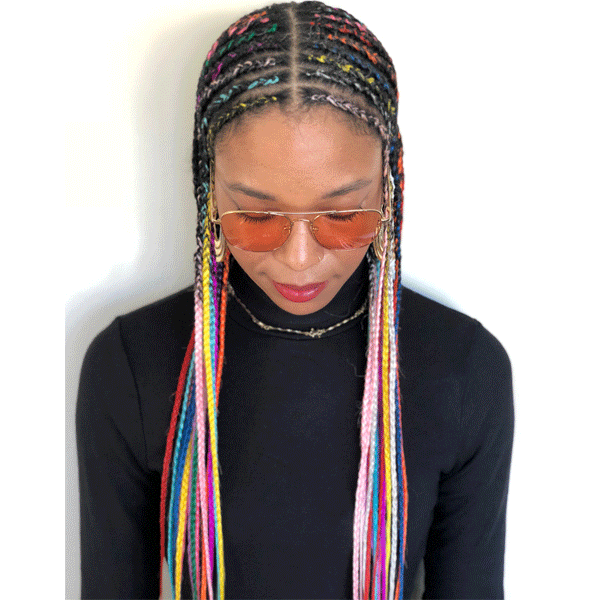Braids And Twists: Everything You Need To Know About Protective Styles!
Protective Styles 101: Everything You Need To Know
Protective styles, like braids and twists, are perfect for natural hair clients that are looking to protect or regain some health to their hair. To break down everything you need to know about natural braids, we asked three of the industry’s leading ladies, Dr. Kari Williams (@drkariwill), Pekela Riley (@pekelariley) and Jahmai Lumpkin (@jahmonit) to give us the 411 on everything from consultation to choosing the best style for your client. Keep scrolling for a full braid breakdown!

Key Components of a Successful Consultation
We know the right consultation can set up any appointment for success, But here are the main points to discuss with your client about their protective style expectations:
- What style is the client interested in and are they the right candidate for it? (Keep scrolling for a complete braid breakdown below!)
- What is the client’s overall hair goals? For example, is the client looking to protect their natural hair from daily manipulation or are they going on a vacation?
- Does the client suffer from scalp sensitivity? This is very important as it can alter the style they are asking for. Scalp sensitivity is very important when it comes to natural braids, Pekela explains, if a client has skin issues such as psoriasis or extreme eczema, it is important to detoxify the scalp before you start the service.
- What’s the vibe? Are they looking to add volume, length or maybe a little bit of color? Protective styles are a great way for the client to express themselves, so get to know what they are looking for in their style!
A Friendly Reminder: You are the professional! If a style doesn’t work with a client’s lifestyle, let them know! “My focus is healthy hair,” Dr. Williams explains. “So I’ve had to have conversations with clients about what styles will help preserve the health of their hair.”

Less Daily Styling = Healthy Hair
Not only do protective styles look gorgeous, they also have long-term benefits for clients looking to give some life to their locks! Low manipulation styles, like braids, can help natural hair grow, Jahmai explains. Braids alleviate daily styling such as stretching, combing and heat which can cause major damage to natural hair.

Breaking Down Different Types of Protective Styles
- Box Braids: Parted in one-inch, square sections and not attached to the head. Box braids tend to have less tension on the scalp and provide versatility with direction.
- Micro/Nubian Braids: Similar to box braids, using the same braiding technique but with smaller sized sections.
- Cornrows: Braids that are attached to the scalp, usually done with an underhand braiding technique.
- Fulani Braids: Cornrows on top, individual braids in the back.
- Senegalese/Rope Twists: Two strands in an alternating twist instead of a three-strand braid, resembling a rope pattern.
- Goddess Braids: Similar to cornrows, goddess braids are attached to the scalp but jumbo in size.
- Feed-in Braids: Extensions are a must for this style. Begin very thin braids on the scalp and gradually add extensions into the braid to create fullness towards the bottom, creating a gradual increase in size towards the end of the braid.
Pro Tip: When creating styles with extensions, Dr. Williams explains, it is important to manipulate the natural hair by pre-stretching to match the texture of the extension. It’s important to elongate the cuticle with heat, Pekela adds, or the style will look frizzy after a few days. Pekela recommends a wash, condition and blowdry to prep for protective styling.







